Destinations
Adam's peak
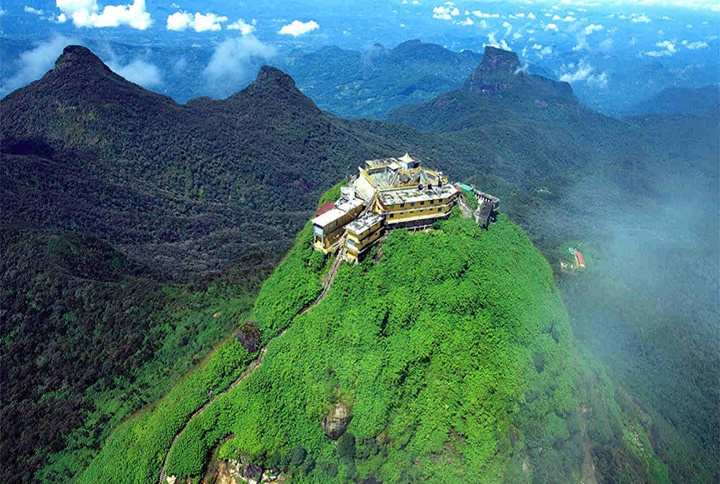
Adam's peak is a holistic destination, which draws people from four main faiths to worship the foot print placed on the summit, and to behold the glorious sunrise which is iconic. Locally known as "Sripada"; which is translated to "Sacred foot" in English, each of the faiths believe it's due to a connection to their religion. Buddhists accept as true, that it is the foot print of Lord Buddha who has placed it during his 3rd visit to Sri Lanka. Hindus believe it is the print of God Shiva, and Muslims believe it to be the mark of Adam when he was expelled from Garden of Eden. Christians too share the same belief with Muslims but also give various views on the print by stating it is St. Thomas's. Apart from various explanations and beliefs, the truly miraculous feat about Adam's peak is that all four religions harmoniously ascend this breathtaking summit, achieving a greater miracle than the rest.
Arugam Bay
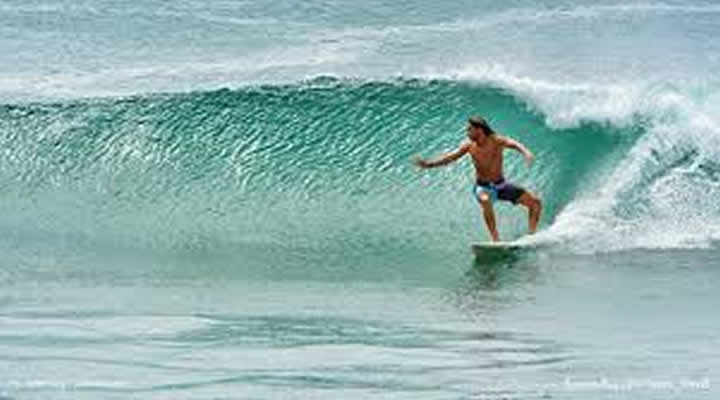
Situated in the Southeast region Arugambay is located 320 km due east of Colombo. Arugam Bay is a popular surfing and tourist destination, world famously known among surfers for hosting competitions. It has many attractions and things to enjoy such as bird watching, elephant watching, lagoon tour and many more. You can also visit the Kumana National Park, Kudumpigala monarchy and many ancient ruins & archaeological sites.
Arugam Bay is also the gateway and the only road access to the Yala East National Park. This unspoilt town offers an abundance of opportunities for those with a passion for water sports and underwater photography, it is also known as one of the best surfing hot spots in the world.
Beruwala
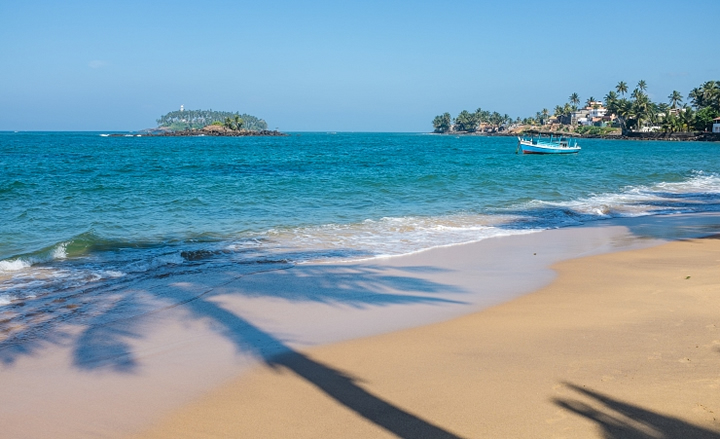
Administered by an Urban Council, Beruwala is a town in Kalutara District (western provincial area) known for its bay and harbour. It is where the country’s oldest mosque namely “Kachimalai Mosque” was built by Arab Traders around the 8th century. Beruwala is the starting point of the 130 km long stretch of beach. One of the hotspots in Beruwala is the China Fort, which is the Gem Trading Fair of Beruwala. It is the ideal place for buying gems brought down from Ratnapura. The gem trade is being dominated by the Sri Lankan Muslims, for generations. Much of the world’s precious stones are being traded by these merchants.
Colombo Fort
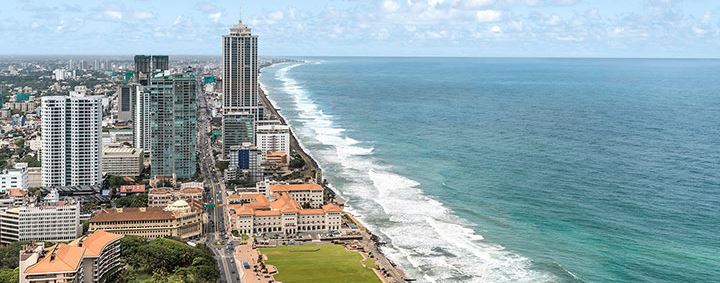
Drive through the commercial and city center known as the “Fort”, built by the Portuguese in the 16th century where grand colonial era buildings stand alongside modern office structures. See the vibrant markets and bazaars of Pettah, and the National Museum with its fine collection of lovely antiques and art of Sri Lanka. You could visit a Buddhist temple and a Hindu Kovil to experience the diversity of religion, ethnicity and customs of the people. Alternatively you may indulge in some shopping.
Dambulla
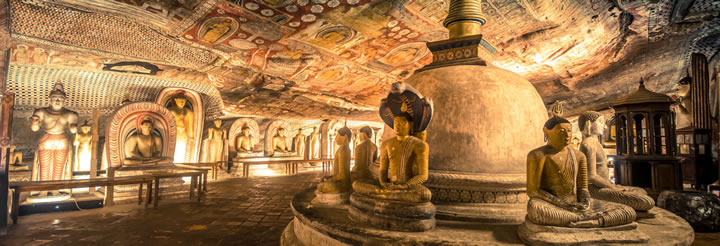
Dambulla is situated in the Central Province of Sri Lanka with the largest deposits of rose-quartz in South Asia. The main highlight is the Dambulla Rock Temple while Rangiri Dambulla International Stadium triggers the interest of the cricket loving fans, being built in just 167 days. Dambulla Rock Temple has been a pilgrimage site for over 22 centuries, which is a masterpiece of ancient engineering combined with modern conservation techniques. For the nature lover, National Parks in Dambulla, Minneriya and Kaudulla are some of the best places in the island to spot elephants. To explore the wildlife that's close at hand, the area is specialised in Safari rides and hot air ballooning for a more appealing approach.
Anuradhapura
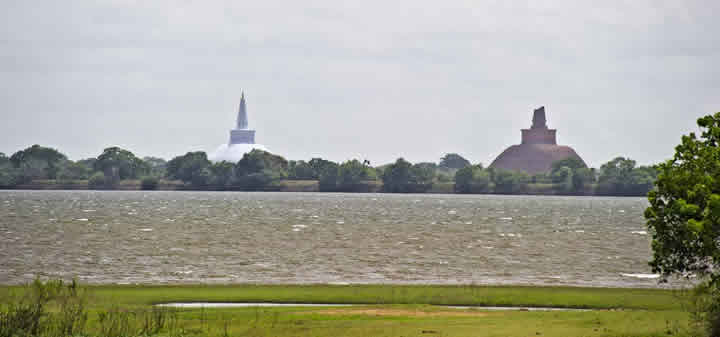
Majestically located in the North Central Province, the city of Anuradhapura was first settled by Anuradha, a follower of Prince Vijaya the founder of the Sinhalese race. Throughout the timeline which goes back to nearly 1000 years, Sinhalese kings and occasional South Indian intruders reigned from the palaces of Anuradhapura. It was the most extensive and significant of the Sri Lankan royal capitals, but its extent of its history since its collapse, make it more difficult to understand than younger, shorter-lived Polonnaruwa. Many ancient monuments still stand tall, and have become a fascinating place for site seeing. Ruwanwelisaya stands on the top of the must see list when in Anuradhapura as it's one of the tallest stupas in the country, and dates back to 2BC. At present the city is a rather delightful, inspiring memento of a glorious past, worthy of being named as a UNESCO World Heritage Site out of the eight named from Sri Lanka.
Bentota
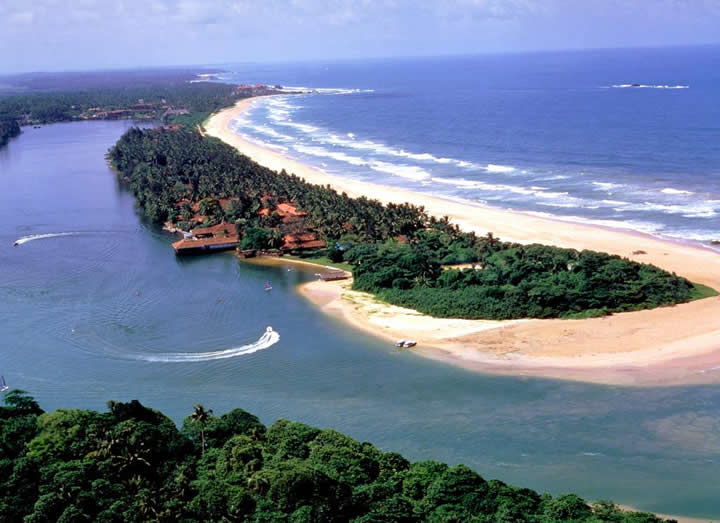
Being the prime beach resort of the south-western and southern coastal belts of Sri Lanka, beautiful Bentota is famous for its sun, sand and especially for its diversity of water sports. The clock ticks faster here, as you will be occupied every waking second by exhilarating things to do and captivating surroundings to see. Peaceful seas during the season from November to April make Bentota Beach ideal for snorkelling, diving, sailing, wind surfing, water-skiing, and deep-sea fishing on a traditional outrigger canoe. Bentota enriched with safe swimming conditions in the season, combined with fun water sports and exciting expeditions, definitely set up an ideal backdrop for a relaxed holiday in Sri Lanka.
Bundala
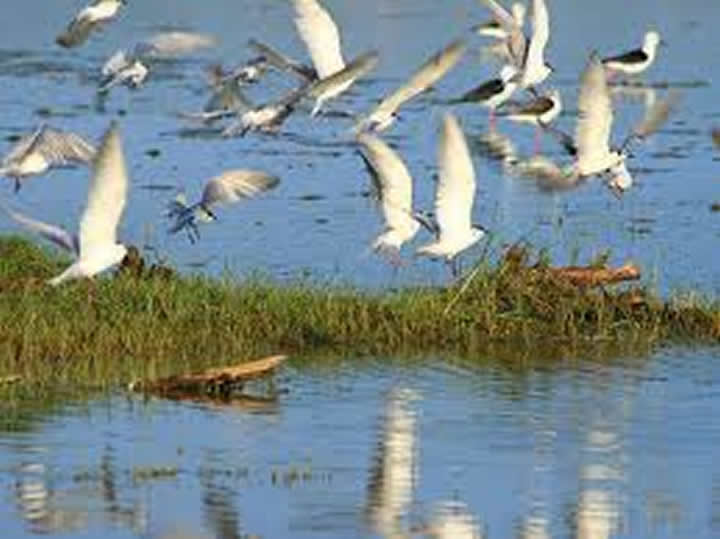
As one of the biodiversity hot spots in Sri Lanka, Bundala National Park is the first Ramsar site that is spread in an area of 6,216ha. The unique and complex wetland system attracts the wintering birds that fly to escape the freezing climate and to rest their weather beaten bodies. Hence Bundala is the ideal grounds to observe the colourful migratory and local air dominators, out of which greater flamingo takes the hotspot. Bundala is also one of 3 wetlands in the island so if you're lucky enough, you will get a chance to behold a salt water crocodile or a deer. The national park is surrounded by five lagoons namely, Bundala lagoon, Embilikala lagoon, Malala lagoon, Koholankala lagoon and the Mahalewaya lagoon. It has a total of 383 plant species.
Dambadeniya

Dambadeniya is an ancient city located in the North Western Province of Sri Lanka. It was once considered as the capital of Sri Lanka, where you will still see the remains of the rock fortress that served as the king’s operational hub in the mid-13th century. The closing stages of its time as a capital, marked an important point in Sri Lanka’s history, as it was due to the foreign invasion, which led the royals to transfer to the South west to protect the country in an efficient manner. What’s left of the rock fortress can be seen at Dambadeniya Pass. The Dambadeniya period is called the golden era of Sinhala literature.
Ella

A near-perfect-location for the nature loving and adventurous; the picturesque valley of Ella offers spectacular views of the southern mountains and highlands. Famed for the main nature trails that lead through it, Ella provides first-rate hiking opportunities, regardless of how experienced you are. It also features Ravana falls which is one of the main waterfalls in the island, Mini Adam’s Peak and Ella Rock. Just a little bit of hint - on a clear night, you can see the Great Basses lighthouse with its commanding posture and that is a view that shouldn’t be missed.
Galle

The Boxing Day Tsunami in the year 2004 could not wash away the beauty of the 4th largest city of Sri Lanka, which gives room for approximately 100 000 people to live, enjoy and spend time with their loved ones. This romantic city is famous for a not so romantic reason, which is that Galle City has become one of the best examples for a fortified city built by the Europeans, in the whole of South and Southeast Asia. Since Galle city hosts the largest remaining European fortress in Asia, the city has been selected as an entry that should definitely go under the list of UNESCO World heritage sites.
Apart from that, Galle is sprinkled with high-flying landmarks such as the natural harbour, the National Maritime Museum, St. Mary's Cathedral founded by Jesuit priests and one of the main Shiva temples on the island etc...
Hatton
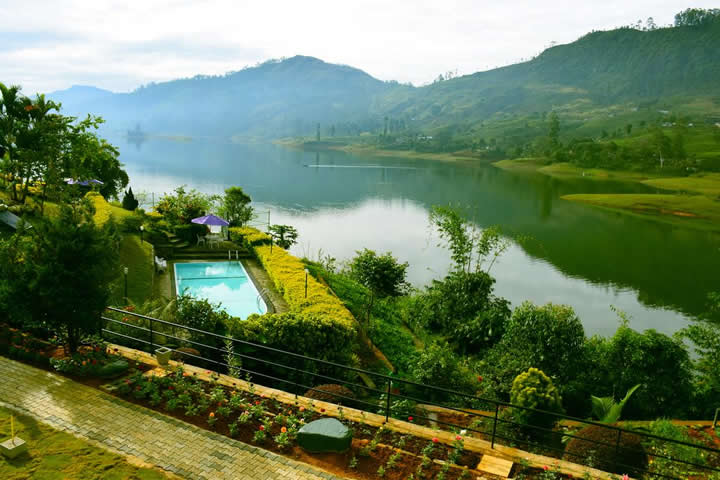
Familiar with the famous image from Sri Lankan hill country, where the red train snakes through the lush tea plantations? Well that is a glimpse from the city of Hatton. A welcome breeze will guide you into this charming town and point you in the direction of one of Sri Lanka's religious places, Adam's Peak which is also referred to as Siri Pada or Butterfly Mountain. Hatton welcomes many pilgrims and tourists from far and wide, who come to witness the rock formation known as Siri Pada, or the "sacred footprint" for themselves.
Horton Plains
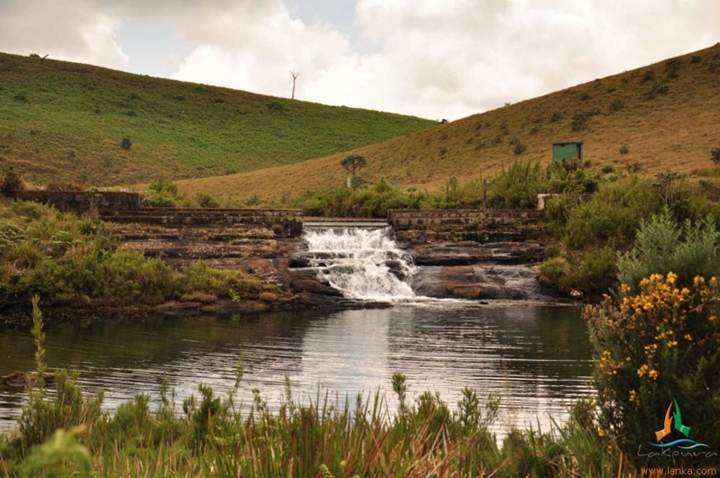
Horton Plains National Park is in the central highlands of Sri Lanka. It was designated a national park in 1988 and is situated 32 kilometres from Nuwara Eliya and Ohiya. There are three major rivers in Horton Plains namely, Mahaweli, Kelani, and Walawe. Horton Plains also features several species of birds and plants that are endemic to the area. And another highlight of it is Baker's fall, which is a welcome waterhole to cool off after the overwhelming climb to World's End. It is a popular tourist destination, attracting many tourists around the world.
Kalkudah
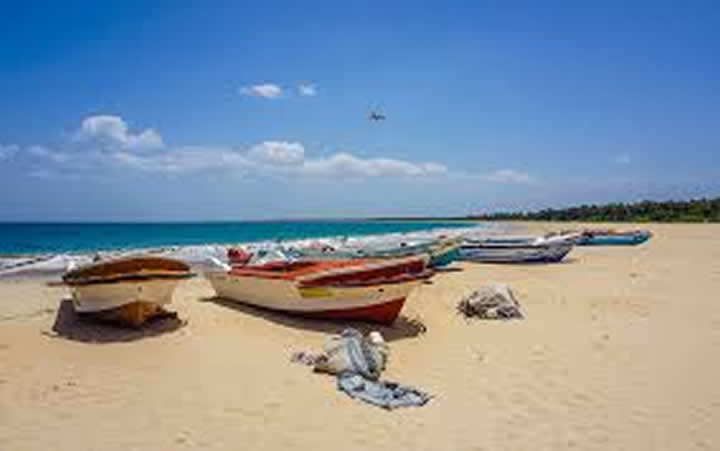
35 kilometers northwest of Batticaloa, Kalkudah is a coastal resort town. Kalkudah beach was declared as the National Holiday resort in 1973. This swimming beach is dotted with palms that offer shade to tourists who enjoy the cool waters of the eastern coast. The golden sandy beach is the epitome of postcard picture wonder. Kalkudah, which means "rock bay" in Tamil, has left many tales behind in the ruins of what used to stand strong. However, frolicking on the beach and nestling in the shade are some of the best ways to enjoy this best-kept secret of the eastern coast.
Yapahuwa
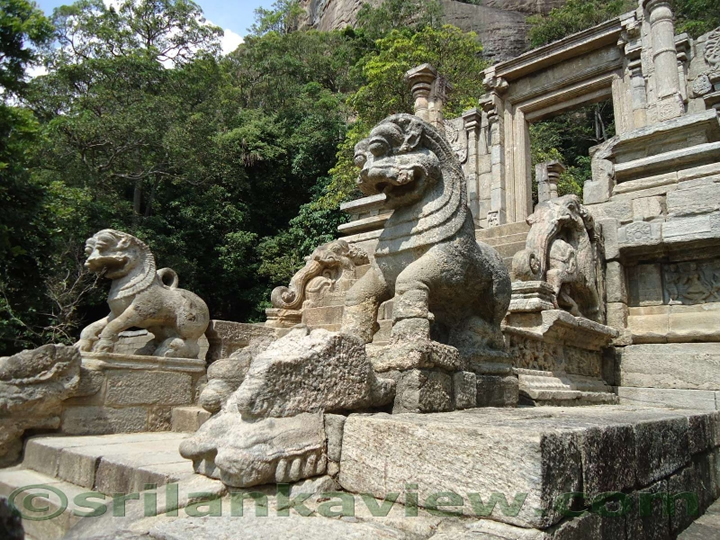
Situated in the North Western Province 4km away from the town and railway station, the rock fortress of Yapahuwa, a splendid testament left behind from the 13th century. Atop a hill that climbs 200 metres high, the climb highlights masonry of ornate and exquisite nature. From the rock lions to the carved rock that deck the steps, the arch on the top is a welcoming sight. The seat of government in the 13th century, Subhaabbota ruled the military from the Yapahuwa fortress. With vistas until the eyes can see, it is the best vantage point to check oncoming troupes, which was what was done. When the Sacred Tooth Relic arrived from Dambadeniya, it was placed at Yapahuwa. A secure rock fortress, it is said to have two sets of moats, and in the midst of the inner and outer ramparts lay the city. When you are here, a visit to the Yapahuwa Temple is a must.
Kandy
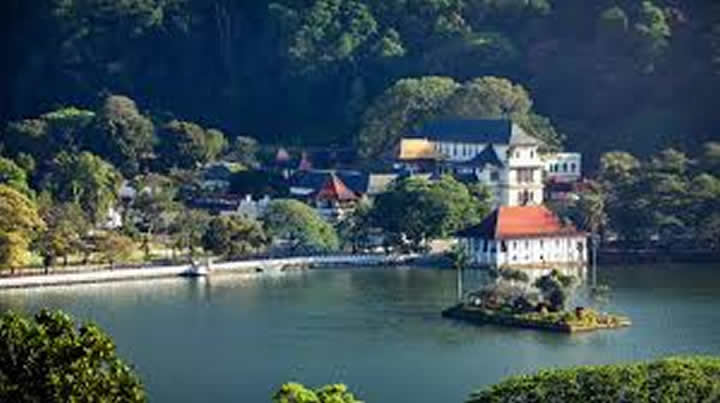
Approximately 115kms away from Colombo, Kandy is a complete contrast to your tropical climate due to its altitude of 500m. The richness of the area speaks louder than all the other wonderful aspects of Kandy, being circled by blue hills, coloured by the lush foliage and nurtured by fountain pure water of rivers.
While the city thrives on the sheer beauty of the area, it is also renowned for the majestic history associated with city of Kandy, which served as the last capital of the Sinhalese Kingdom. With a tremendous effort that nearly took British 03 centuries to conquer, defying Portuguese and Dutch, in the year 1815 the ever imposing capital finally surrendered. Since Kandy was the last capital during Sinhalese Kingdom it has now become the blessed home for the focal point of Buddhism "The Temple of the Tooth Relic".(Owning the tooth relic was one of the prerequisites to become the King of Sri Lanka)
Thus preserving the aura of an age old royal elegance and a breath-taking natural beauty Kandy promises to offer you more than what you've bargained for.
Habarana

Positioned in the district of Anuradhapura North Central Province, Habarana is a small city which is popular for its chain of tourist resorts and wonderful tourism experiences. It is the focal point for travellers who want to experience everything. If you are in the search for an exclusive Safari experience, going wild and being in the moment with the inspiring nature, Habarana woods are the ideal setting with all the elements, heavily inhabited by wild elephants. Located in close proximity to the renowned historical sites such as the ancient rock fortress of Sigiriya, Dambulla etc… The area offers some of the best of hotels, best of greenery and best of the wild life in Sri Lanka
Hikkaduwa
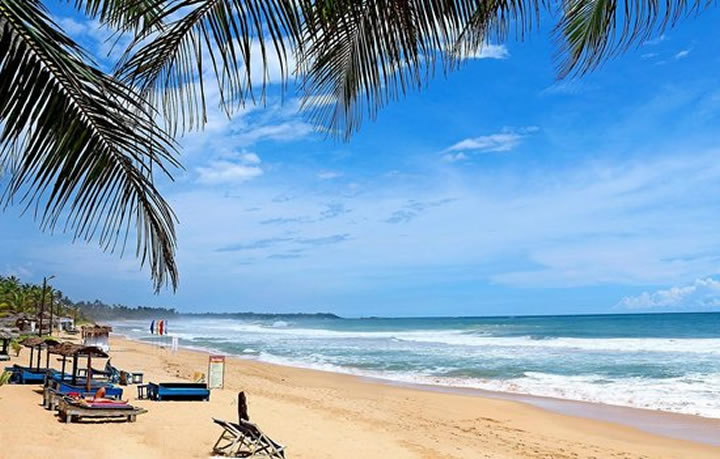
Hikkaduwa is one of the most colourful coastal stretches of Sri Lanka, that host ultimate beach parties, home to some of the most gorgeous reefs and marine life. Located in the southern province in the district of Galle, Hikkaduwa is a laid back spot where the eternal music of the waves combing the sandy coast sets the scene, for a lazy holiday by the sea, accessorised by beer, hammocks and a lot of fascinating people. Hikka - as it is fondly known, the city is definitely a must-see to be included in your itinerary.
Jaffna
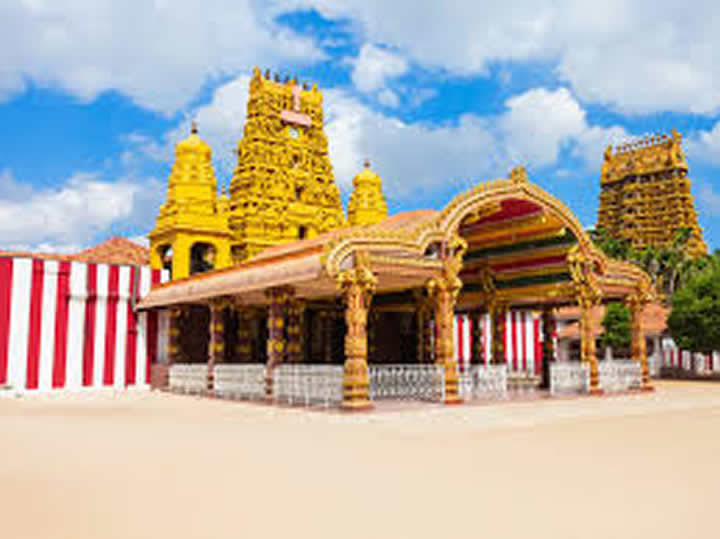
Located in the Northern Province of Sri Lanka, with an estimated population of 88,138, it is the 12th largest city and the second most populated city in Sri Lanka. Blooming with smiles credited to the rapid growth in the area, the city was exposed to the most violent war shocks for 30 years. As a result, Jaffna was left untouched by modernization and so much of the town is time-locked in the 50's, from the buildings to the old Morris Minor cars that run its streets. Given that tourism is new here, there is much to discover and many unspoilt beaches, making it perfect for those in search of sand and sun with a difference. While you are there, care to have a peek in the Dutch fort that is an impressive structure followed by many Dutch era homes, churches and civil buildings most of which were dented due to the war.
Kalutara
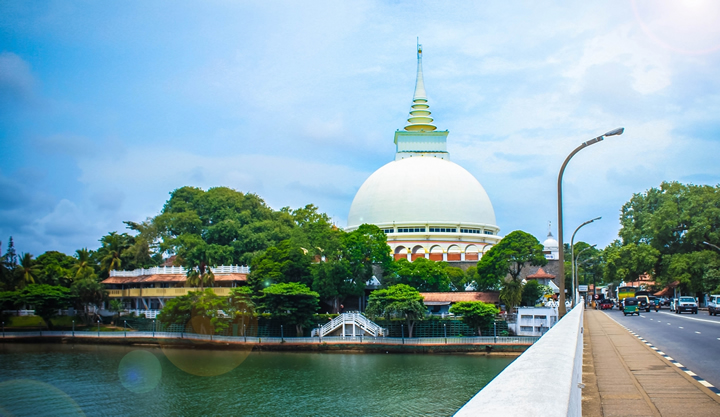
Situated roughly 40 km south of the capital, Kalutara is a large town in the Western Province of Sri Lanka. The city is known for the famous pilgrimage site Kalutara Bodhiya, which is a very sacred and devotional place for all Buddhists. It's a famous pit-stop for pilgrims travelling down south who want to make offerings to the Gods to assure their safe passage. Once you cross its bridge, you are officially in the southern province of the country. This was once temporarily bestowed the status of capital, by a South Indian Prince back in the 11th century. It was a part of the colonial struggle, giving rise to some of the remains of fortifications, which you may see today.
Katharagama
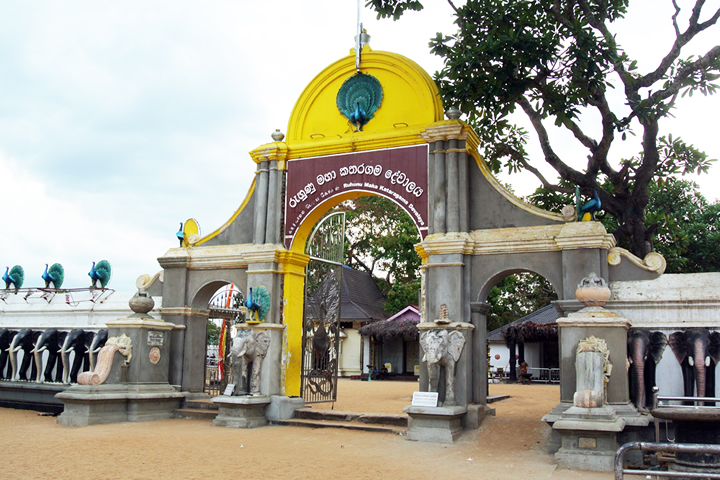
Katharagama is a known place of worship for Buddhists, Hindus and Muslims alike, nestled in the southern regions of Sri Lanka; it is flocked by pilgrims all year round, offering prayers and worship. The Kirivehera being the main attraction of this quaint religious town for Buddhists, the Katharagama Temple and Sella Katharagama also beckon forth many pilgrims to visit on a yearly basis. Coming alive in July and August, the area brims with life as the festivals and processions take to the streets, with majestic pachyderms, fire walkers, dancers and much more. For those who want an extended vacation in the area after your pilgrimage, you can visit the Yala National Park for a wilderness safari and spot the many fauna and foliage of the area. Katharagama, "The Faraway Abode" is ideal for those seeking a slice of peace and relaxation.
Kithulagala
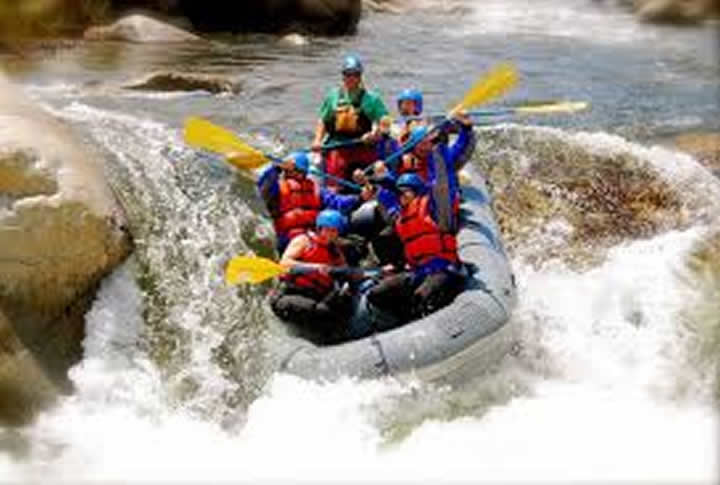
Rafters and adventure seekers alive, make way to the white waters of Kithulagala for some exhilarating rushes of adrenaline as you take to your oars and battle through the waters. However, Kithulagala is famous for another attraction. The setting for the famed World War II film "The Bridge on The River", which starred Sir Alec Guinness, the featuring bridge still stands in Kithulagala with the Kelani River passing under it. Plenty of camping opportunities, Bird Watching, Jungle Walks, and River Bathing are some of the fun activities you can indulge in. The climate in Kithulgala is of a wet zone. The Kithul palm is a useful tree from which Jaggery and Kithul treacle is made of.
Kurunegala
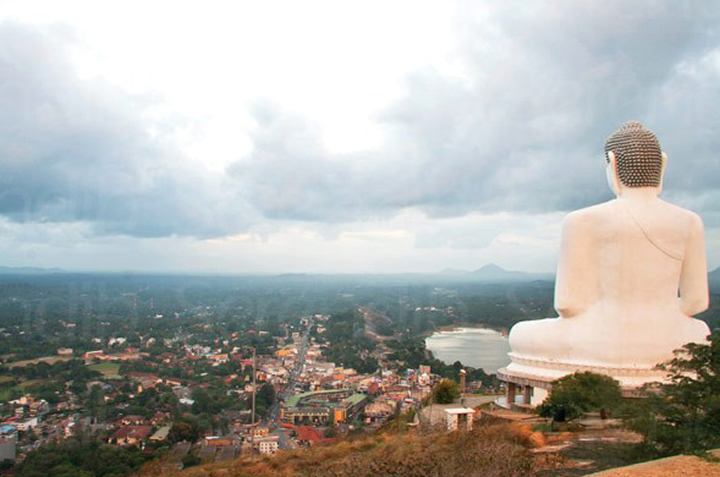
Being the Capital City of the North Western Province, Kurunegala is surrounded by coconut plantations and rubber estates and is often called the epicentre of Sri Lanka's route to various destinations, connecting Kandy to Puttalam and Colombo to Anuradhapura. This crossroad city is a haven of sights and sounds, one being Athugala, the 325km high black rock that presents panoramic views of the surroundings such as the Kurunegala Lake and other rocky landmarks, that nature has shaped to mimic the fauna of the island. Some of the rocks have been given names of the animals they resemble: Elephant rock, Tortoise rock etc. Sri Lankan folklore tells us that when a drought befell on the land, the animals who threatened the water supply to the city were magically turned to stone, and have since then been the many rocky formations sighted in and around the Kurunegala area. The primary geographical feature of Kurunegala is The Kurunegala Lake.
Negombo
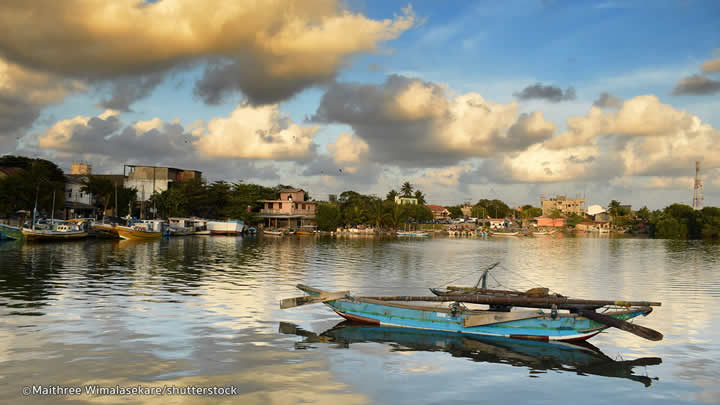
Located on the west coast of the island and at the mouth of the Negombo Lagoon, it is situated in the Western Province. One of the major commercial hubs in Sri Lanka known to many as Little Rome, due to its populace of Roman Catholics. This once fishing town is a point of convergence for many tourists coming into the island, being the closest tourist destination near the Bandaranaike International Airport in Katunayake. Sandy beaches, colourful boats of the fishing community, the lagoon, Dutch landmarks and canals that dot the town are some attractions in store when in Negombo. Also it is famous for cinnamon, ceramics, and brass ware. The ceiling frescoes of St. Mary's Cathedral, administrative buildings and Churches are a definite attraction to one who visits this wondrous city.
Nuwara Eliya
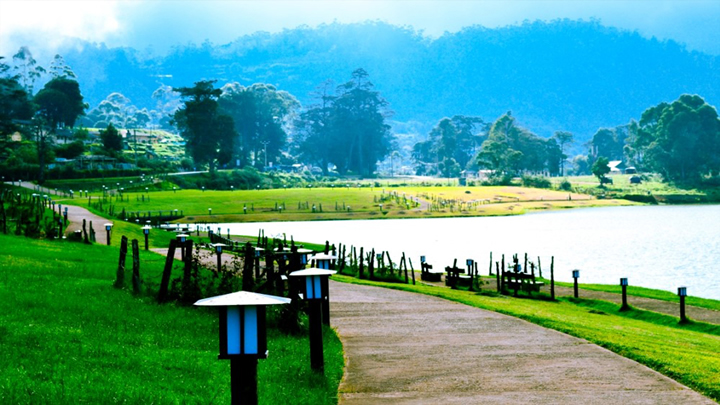
Founded by Samuel Baker, it's called Little England of Sri Lanka and sits high atop the inner highlands blanketed with cool air and misty clouds. Named "city on the Plain" overlooking the tallest mountain in Sri Lanka being Piduruthalagala. This beauteous town is a continuing memory of Sri Lanka's British past, as the houses of Nuwara Eliya hold the architectural design elements and look of an English countryside. 1890 meters above sea level, this town is ideal for tea cultivation, which is the usual sight when making your way to the top. Even a great shopping adventure at the Nuwara Eliya town and market place, or a few swings on the evergreen Golf Course, being one of the finest 18 holes golf courses in Asia, could be just what you needed. Take the winding scenic route to this mountain top town filled with culture and history for a memorable time.
Passikudah
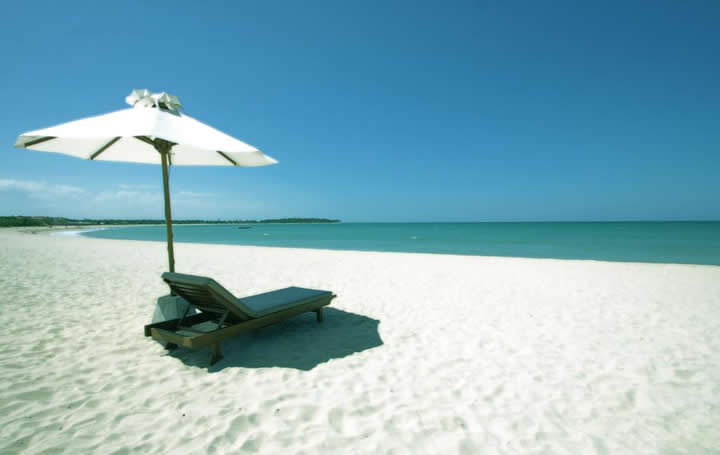
Passikudah, a dawning tourist centre, is a beauteous eastern coast beach that will amaze you on sight. It's one of the most breath-taking beaches in Sri Lanka. This is an ideal place for relaxing, explore marine life, shipwrecks and indulge in thrilling water sports. This beach can be reached via Trincomalee, Polonnaruwa or Batticaloa, and is home to long stretches of shallow coastline and hotels, shopping boutiques and more dotting its bank. An ideal location for a tranquil stay, if you are in search of other attractions, you may travel to Trincomalee, Polonnaruwa or Batticaloa. The calm serene of the clear blue waters are a definite attraction to visitors from around the world.
Knuckles
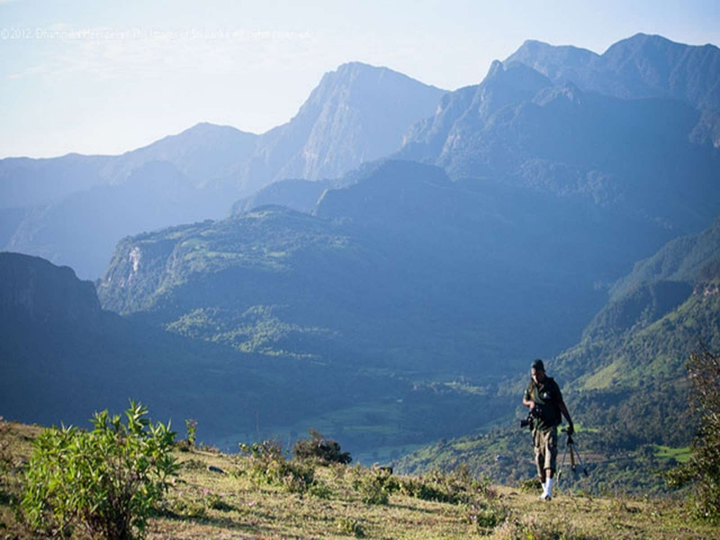
Knuckles Mountain Range lies in the Districts of Matale and Kandy. It is Governed (governed) by the Department of Forest Conservation. Lush green hills and foliage of Knuckles Range, calls out many trekkers and adventure enthusiasts to traverse up to an altitude of 1400 metres to be kissed by the sun in Mother Nature's bounty. With camps being setup, one at Riverston at the top of the mountain range, you can explore the wilderness and the essence of nature on your terms whilst spotting the many fauna of the region, such as 200 bird species and the 15 species that are endemic to the land. Find yourself at the Enasal Wadiya of Knuckles and explore through the depth of this knuckle shaped mountain range, while keeping an eye out for shutter-worthy animals such as Jungle Fowl, Yellow Eared Bulbul, Dusk Blue Flycatcher, Brown Capped Babbler, Sri Lankan Grackle and many more. No trekking trip is complete without an overnight stay at camp. Set up at one of the campsites and make yourself one with the wild.
Mirissa
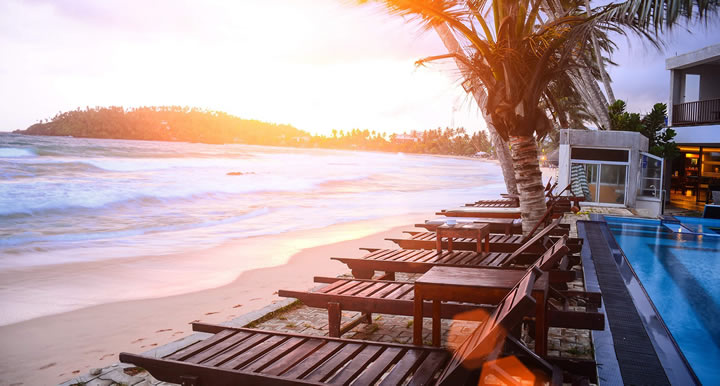
Recently featured under the spot light for being one of the best whale watching destinations in the world, this quaint city named as Mirissa is a secluded and charming fishing village that offer wonderful sightings of Dolphins, Blue and Sperm Whales during December to month of April. Apart from that breathtaking beautiful views, blue waters, white waves lapping at the sandy beaches, great breaks for surfers is what Mirissa is known for. However, Mirissa has more to offer than the sights and water sports. The Siri Sunandarama Temple is one of the most sacred Buddhist places of the town. The town, which is famous for masked dancing, the temple is home to a collection of traditional masks, whilst the second is found in the village of Udupila. At times of festivities, this small fishing town comes alive with masked dancers making their way to the temple to offer their respects.
Yala
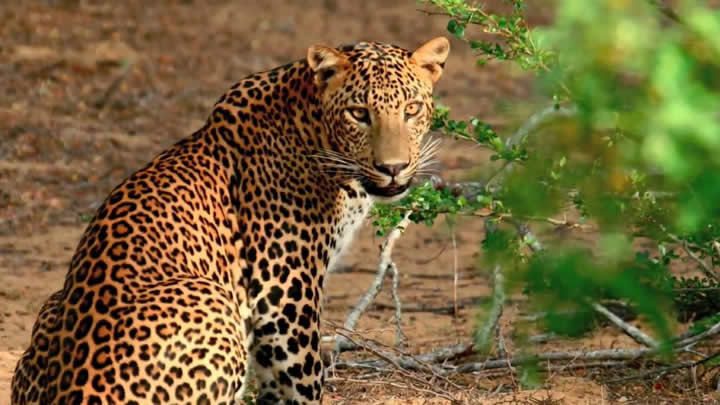
All of Sri Lanka's 24 parks are different to one another, being the second largest in Sri Lanka with a wide land area of about 130 hectares; this park was a wild life sanctuary in ancient times and was transformed into Yala National Park in 1938. Consisting of five blocks and two open to the public namely the Ruhuna National Park and Kumana National Park, the Ruhunu Yala National Park is home to jumbo pachyderms, majestic peacocks and skilled leopards roaming the wilderness that is. Yala also boasts of many other attractions found within, from the varying species of animals who have made it's home at the park to the ancient monastery caves found as well as the Salt Pans of the Palapatuna Sea are all things to look out for, or rather go in search of when you make your way there.
Nilaveli
The white sandy beaches of Nilaveli in Trincomalee are considered as one of the best beaches on the island. Peaceful, serene and breathtaking, Nilaveli Beach is in its best form from April to October. From surfing to scuba diving, and other water sports, tourists from all over, make their way to the east coast. Nilaveli translates to open land of the moon-shine’ and testaments the name to its true beauty. Attractions of this coastal resort town include the beach and a visit to the Koneswaram Temple situated nearby. You can get to Nilaveli by car, or train. Car journey from Colombo takes about 6 hours, by bus (public transport) takes about 7 and half hours. Nilaveli Beach has direct access to the famous Pigeon Island where you can go snorkelling or scuba diving.
Panduwasnuwara
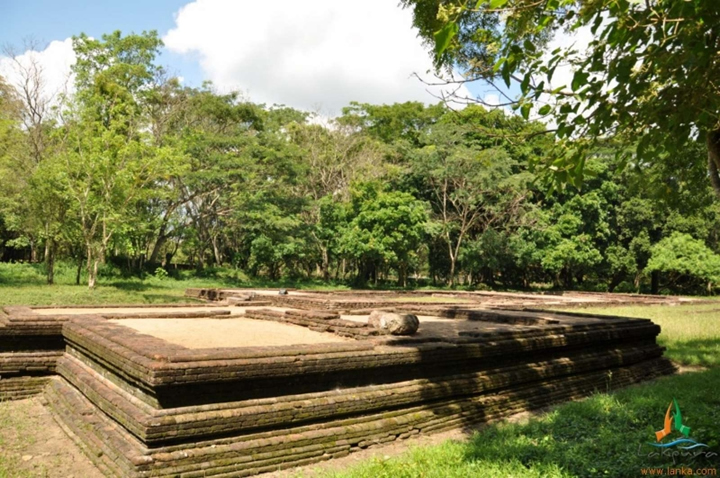
Built in the 20th century AD, Panduwasnuwara is spread over an area of 20 hectares. A king's tale is what Panduwasnuwara entails. Named after King Panduwasdev who took the throne back in 504 BC, this town is home to his rules’ remains. The first ever irrigation reservoir in history was built here. Some of the ruins still exist here such as the royal palace with carved pillars and guard stones and a stone inscription. From the moated tower known as Ektemge, which was the home of the beautiful Princess Unmada Chitra, to the tomb of King Vijaya is also present amongst the ruins.
Pinnawala
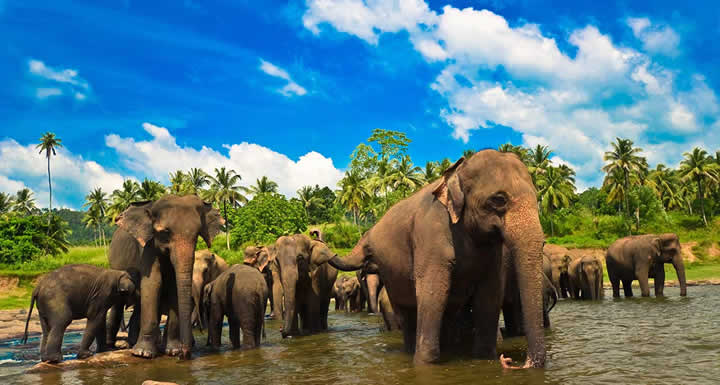
Pinnawala Elephant Orphanage is established by the Sri Lankan Department of Wildlife Conservation in 1975, providing care and sanctuary to orphaned elephants. At the Orphanage they feed, nurse and house young elephants found abandoned by their mothers. The Pinnawala Elephant Orphanage is built on a 25 acre coconut plantation. , it is an ideal place to watch these majestic beasts as they are taken to the river twice a day for bathing and relaxing in the cool waters. One of the heart-warming sights at the Pinnawala Elephant Orphanage is to watch baby elephants being bottle-fed and well nurtured by their mahouts and caretakers. The elephants are also fed large quantities of jackfruit, coconut, kitul (sugar palm), tamarind and grass. This is a definite pit stop on your way to Kandy, and a place to talk about.
Polonnaruwa
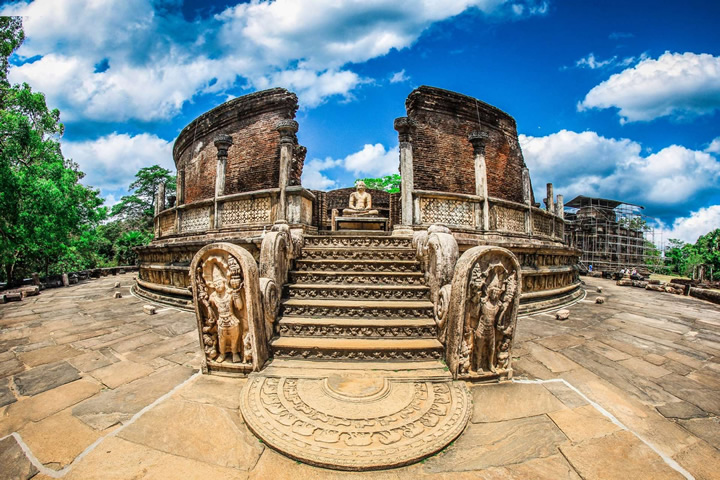
Located in the North Central Province of Sri Lanka it is one of the ancient kingdoms in Sri Lanka. Declared the capital city by King Vijayabahu in 1970 by defeating the Chola invaders. From ruins of royal palaces to bathing pools and ponds, temples, to the fauna and foliage of the area, this quaint historical city is ideal for a sightseeing and adventure. The Gal Vihara, Vatadage and Thuparama Image House are some of the best-known landmarks, whilst there are many others to be seen. Make your way to the Archaeological Museum in Polonnaruwa and find out more of this ancient land along with the pieces of Sri Lankan art of the centuries past. This city has been declared a World Heritage Site.
Sinharaja
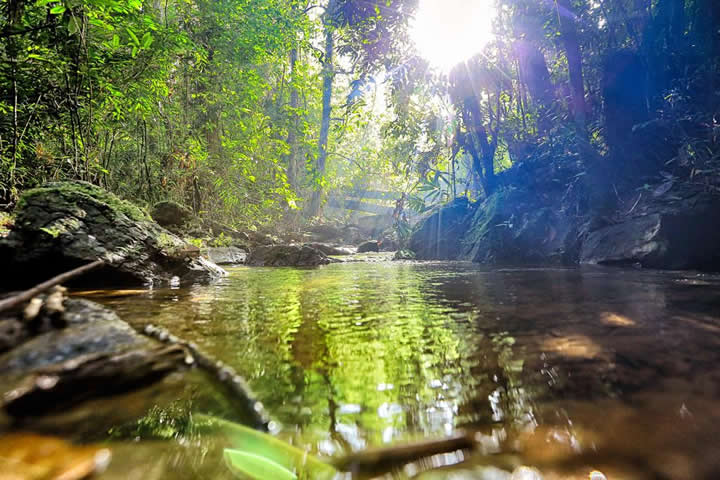
Sri Lanka's very own rain forest, Sinharaja translated to the "Kingdom of the Lion". Home to many endemic species, this national park and biodiversity hotspot, was declared a World Heritage Site by UNESCO. As a biologically unique lowland rain forest, the treasures found within it includes the likes of the Red-faced Malkoha, Sri Lankan Blue Magpie, White-faced Starling and Scaly Thrust to name a few. Many bird watching expeditions are carried out year round, with one being the Mixed Species Bird Flock study, which has been ongoing since 1981. Some of the other species seen here are the reptiles namely Green pit vipers and Hump-nosed vipers, also found here are a large variety of amphibians, especially tree frogs. Invertebrates such as leeches and the common Birdwing Butterfly have also made their ground here. A trek through the dense vegetation with binoculars, a camera and a guide is the way to take In Sinharaja.
The Temple of the Tooth Relic
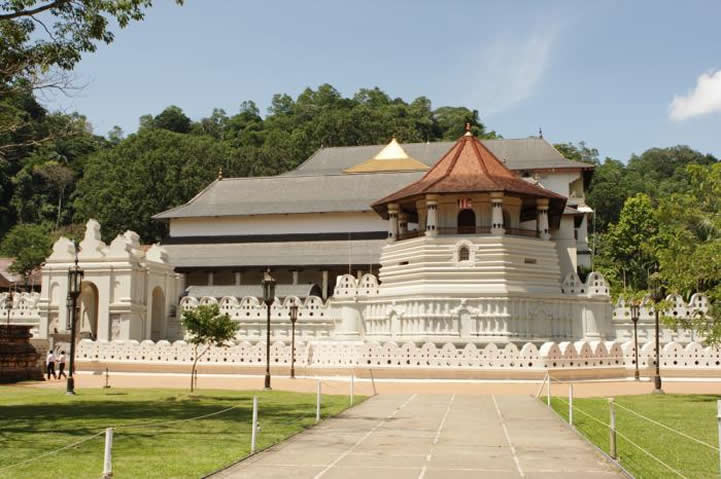
The city of Kandy is a blessed location, due to the glorious presence of the sacred tooth relic of Lord Buddha. The edifice that houses the sacred relic is what we call Sri Dalada Maligawa (The Temple of the Tooth Relic). The temple was built within the royal palace complex at the time when the royal blood of Sri Lanka was governing the country.
The most fascinating part about this treasure is that, it is the only surviving relic of Lord Buddha, which is embraced by Buddhists. The decision for keeping the relic in Sri Lankan soil was taken after the bold statement by Lord Buddha declaring that Sri Lanka will be the nation where Buddhism will be safe for 5000 years.
The relic was not only a focal point of Buddhist veneration, but it also played a major role in the local politics since ancient times, due to the belief that whoever holds the relic, holds the authority of the country, which became the reason for many Sri Lankan royals to build temples for tooth relic with prime security... Once they were lucky enough to conquer it.
Trincomalee

Travelling approximately 250km just to get a Tan is a laugh, but if it is for Nilaveli and Uppuveli beaches at Trincomalee (dearly addressed as 'Trinco') then it's perfectly alright! You are not only able to get the glowing bronze skin you always wanted. But you'll also be able to watch whales and dolphins swim, visit the World War II cemetery if the sorrowful era tickles your thirst for knowledge, favourite suicidal spots named as 'Lovers Leap', Hindu Kovils and colonial architecture dotting the topography. Best known for the natural deep water harbour since colonial times, Trinco has become a fascinating city for the locals and foreign leisure travellers, that gives the ultimate sun, sea and sand experience.
Unawatuna
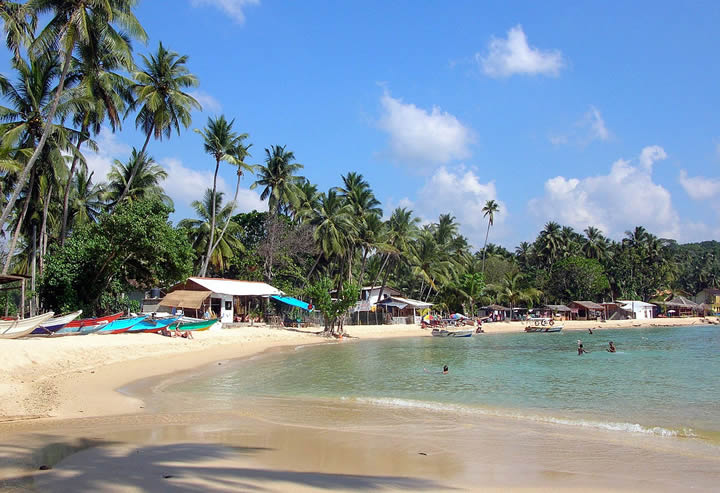
A coastal town in the Galle District situated 5 meters above sea level. Unawatuna is a favoured holiday destination of many who make their way to party or relax their worries away. With the spray of the waves and the sun of on their faces, this coastal village in the Galle province is a major tourist attraction and famed for its beautiful beaches and corals. Some of the other attractions are the Unawatuna Beach, Coral Reefs, Turtle Hatcheries, Yatagala Raja Maha Viharaya and the Japanese Peace Pagoda. Unawatuna Beach is also a great place for snorkelling and scuba diving.
Sigiriya
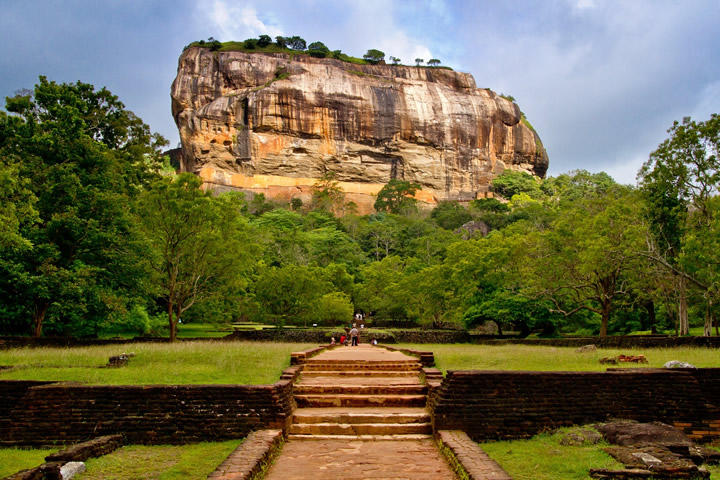
A massive column of rock nearly 200 metres (660 ft) high, a beautiful sight as you wake and walk out of your lodgings, powerful and ever reminiscent of the culture and history of the land and that is why Sigiriya is one UNESCO's World Heritage Sites. Built in the 5th century by King Kassapa and inhabited for 18 years, this rocky royal citadel is a true wonder and testament to the skills of that era in Sri Lanka. Ringed with a moat and a rampart, the lion rock’s entrance made of lion paws beckons you to discover and climb the 200 metres of rock that juts out from the foliage. The ‘Ladies of Sigiriya’ await you in the midst of the journey to the top to the famous frescoes that have been preserved for centuries. Find the beauty of Sigiriya within your imagination, as you see what was from the remains left behind. The whole face of the hill appears to have been a gigantic picture gallery perhaps the largest picture gallery in the world. The paintings consist of beautiful ladies of about 500 or more. More frescoes can be seen elsewhere in a location called the "Cobra Hood Cave".
Tangalle
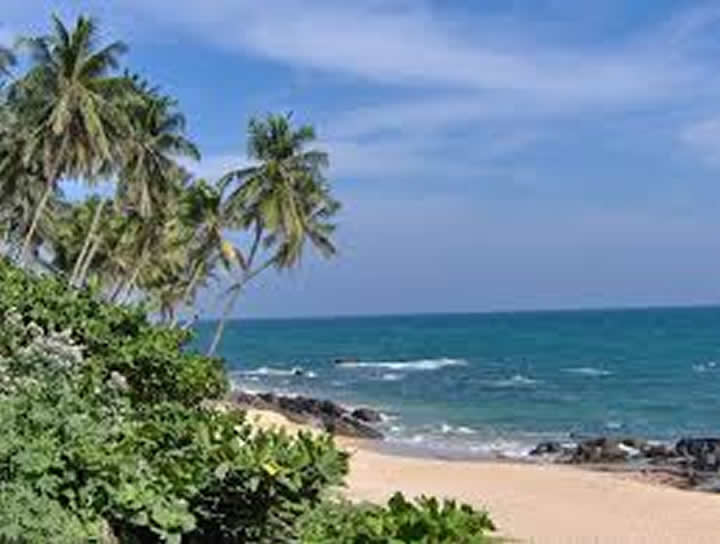
Governed by the Urban Council Tangalle is a big town in the Hambantota District. A fan of pristine beaches, heritage and history will find Tangalle a treat. The fine sandy beaches of Tangalle are sprinkled with rock a formation, which allows a fantastic vision when the Ocean waves splash against them. There is also the prison, which was previously a Dutch fort and of course the rock temple at Mulkirigala, to the Kaduwela blowhole, the turtle conservation and many great attractions. However, most tourists enjoy the cool waters of the sea, and indulge in swimming, snorkelling, scuba diving and other water sports. This little town on the southern coast is a true haven. Its beaches have fine white sand an excellent spot for swimming. Dutch being the first to discover the maritime benefits of Tangalle by their influence has a few remaining examples of architecture.
Tissamaharama
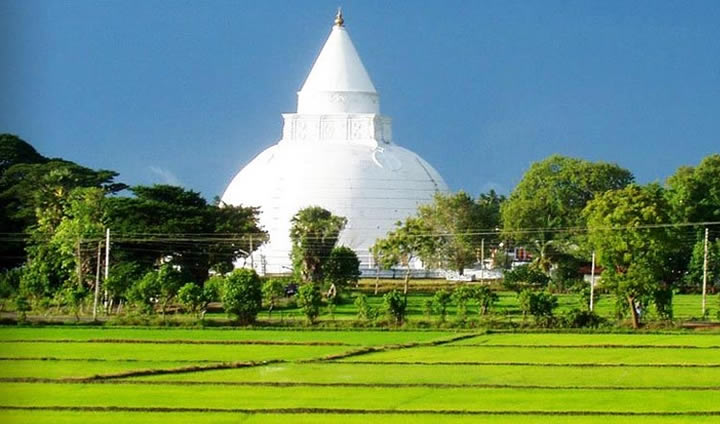
Located in the Southern Province of Sri Lanka in the Hambantota District and once a kingdom of yesteryear, this town is famous for Tissa Wewa, Tissamaharama Stupa and an entry point into Katharagama and Yala National Park. The Tissa Wewa Lake was built in the ancient rule of King Dewanampiyatissa and is an artificial lake purposed as irrigation system where the lake and town was named after him. It is said that during the era of King Kavantissa. Around 12,000 Arahats Buddhist monks had lived in Tissamaharama and its surroundings now, many pilgrims and tourists stop at this lake to relax whilst passing through to their next journeys.
Udawalawe

To preserve nature and its members is what we are supposed to do, being the most intelligent species dwelling on the earth. Udawalawe is one such attempt made by Sri Lankan authoritative figures to protect the catchment of the reservoir. It has become the 3rd most visited National Park of Sri Lanka due to the Udawalawe reservoir on the Walawe River, which emits an undeniable force of attraction that is particularly stronger to elephants. The attraction has enchanted a herd of roughly 250 permanent elephant residents in the total 30,821 hectares of Udawalawe National Park. While Elephants become the favourites on the land, you will also see The Rusty-spotted cat, fishing cat and Sri Lankan leopard, Sri Lankan sloth bear, Sri Lankan Sambar deer, Sri Lankan axis deer, Indian Muntjac, Sri Lankan spotted chevrotain, wild boar and water buffalo and many others.
While the land of Udawalawe entertains many species, it has become a significant environment for water birds and elephants that has dearly embraced the geography.
Wadduwa

Wadduwa received its name from "Weda Doova", which means to say the "Land of Native Doctors". This coastal town is popular amongst tourist as a laid-back haven of relaxation and tranquillity by the sea. It has a rich cultivation of coconut palms and is popularly known for its Toddy and Vinegar. Some of the other products made from the coconut fibre are carets (carpets), brooms, masks, handicrafts and many other products. This city is famous for fishing; watch them as the fisher folk work together to bring in their days catch. If you are indulgent, then water sports galore such as windsurfing or maybe some beach sports, such as a game of volleyball.
Wilpattu
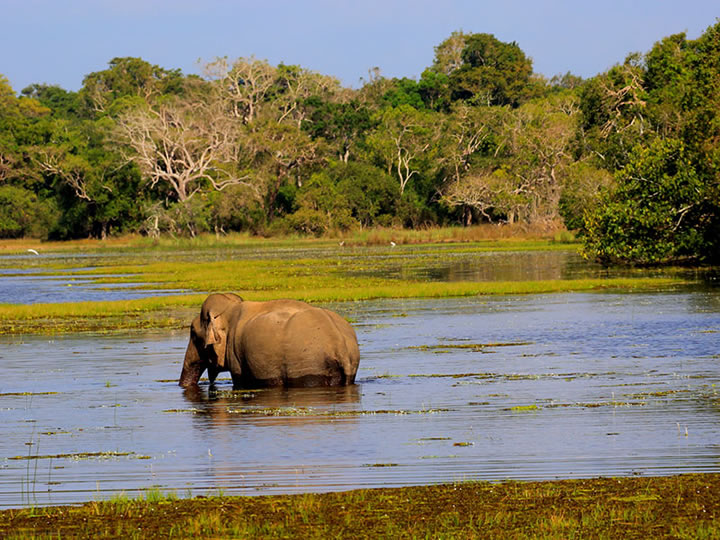
Travelling 180 kilometres from Colombo, you will find Wilpattu National Park in all its glory, covering a forest span of 1,311,693 hectares; this is one of the largest and oldest parks in the country. Over 60 watering holes or lakes can be found in the area allowing the animals who call the Wilpattu National Park its home, to roam freely in their natural habitat. This popular eco-tourism destination is home to 31 species of mammals and trees such as "Veera" and "Milla". Some of the animals that are under threat are Elephants, Leopards, Water Buffalo and the Sloth Bear. While the Mongoose, Mouse and the Spotted Deer are more like the parks residents. Take a safari through the foliage of the land and spot the many surprises around the corner.